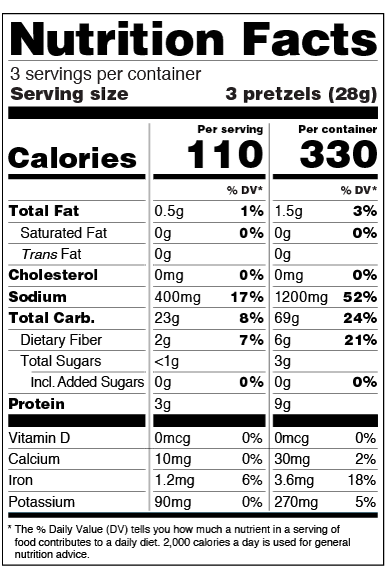Nutrition labels inform healthy food choices
Updated FDA Nutrition Facts helps shoppers
by Betsy Lynch
The quickest way to healthier eating starts with reading labels. You might be surprised how it changes what foods you buy and how much of them you consume. Remember the potato chip company that boasted, “No one can eat just one!”? Once you know the fat, salt, and calorie content—and become aware that an actual serving is just one ounce—you might think twice before munching half a bag while watching TV.
 The Food and Drug Administration’s updated “Nutrition Facts” label makes that information easier to digest.
The Food and Drug Administration’s updated “Nutrition Facts” label makes that information easier to digest.
It starts with serving size, number of servings per container, and the calorie count per serving in large, bold print. It’s an important number since maintaining a healthy weight includes balancing calories consumed and calories burned.
The next section specifies the amount of fat, cholesterol, sodium, carbohydrates, and protein in a serving. Saturated fat and trans fats are listed as subcategories, as are fiber and sugars. Quantities are in grams, but more useful is % DV, which stands for the “percentage of the daily value” for each nutrient in a serving. It’s a handy measure of whether a food contributes a lot—or a little—to the body’s overall dietary needs.
Vitamins and minerals are listed in micrograms and milligrams, and as percentage of daily value.
In each nutrient category, aim to meet—but not exceed—100 percent of the daily value.
The notable exception is fiber; reaching 100% DV is the minimum your body needs each day. More is better! For this reason, “total carbohydrates” is divided to show fiber, natural sugar, and added sugar separately.
Notice, too, that no daily value is listed for trans fat, which has been associated with elevated LDL (“bad”) cholesterol and other concerns. Also, pay attention to the daily value for sodium in processed foods. It’s easy to overdo salt, which can contribute to a host of health issues
So, before you put a product in your grocery cart, take a moment to scan the “Nutrition Facts” label and review the list of ingredients. You may make healthier choices as a result.
To learn more, go to fda.gov/food/new-nutrition-facts-label/how-understand-and-use-nutrition-facts-label
